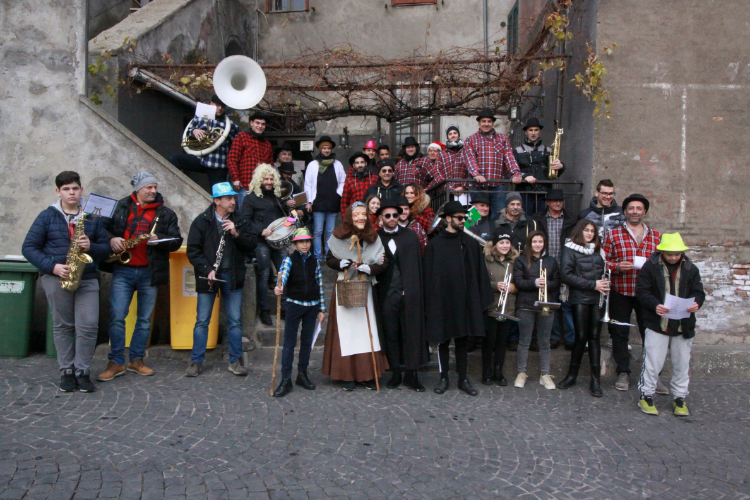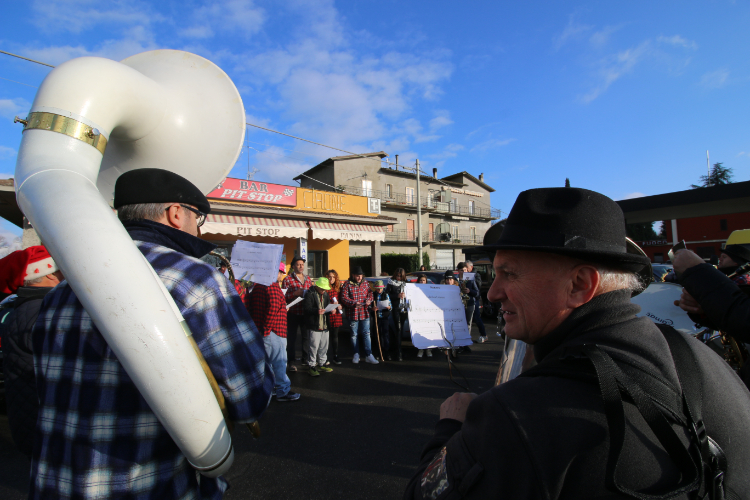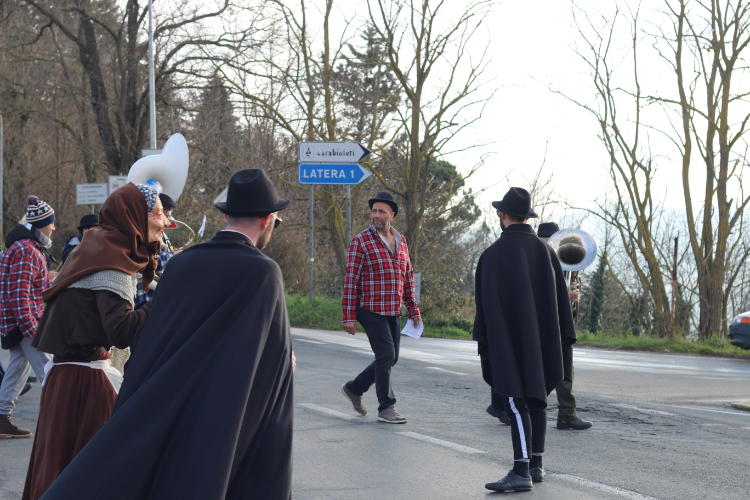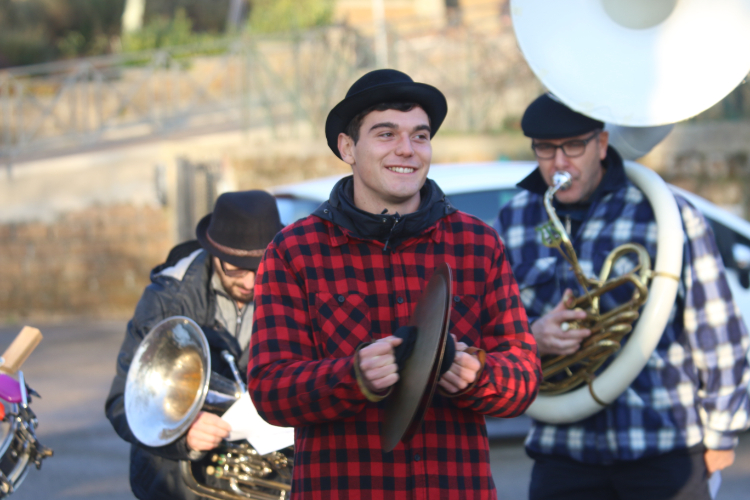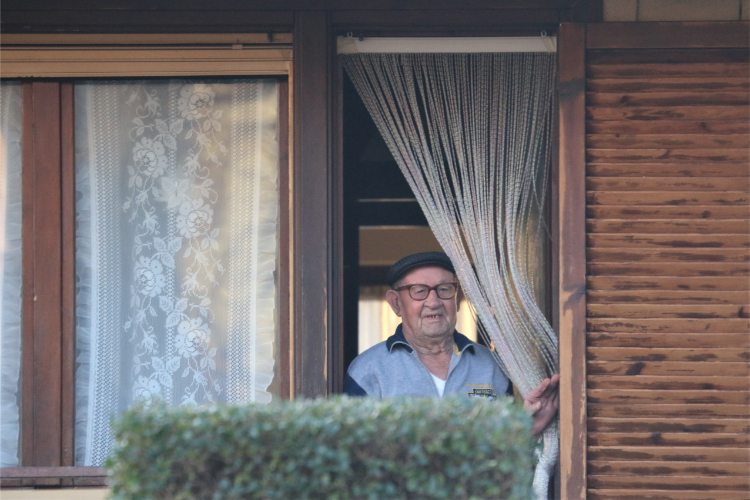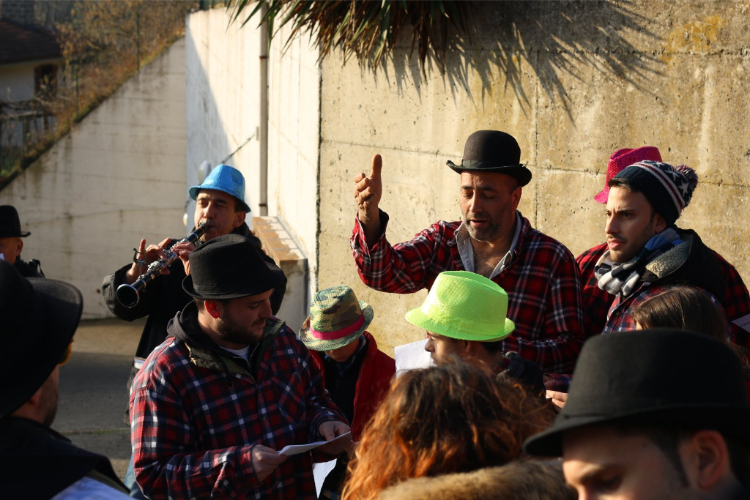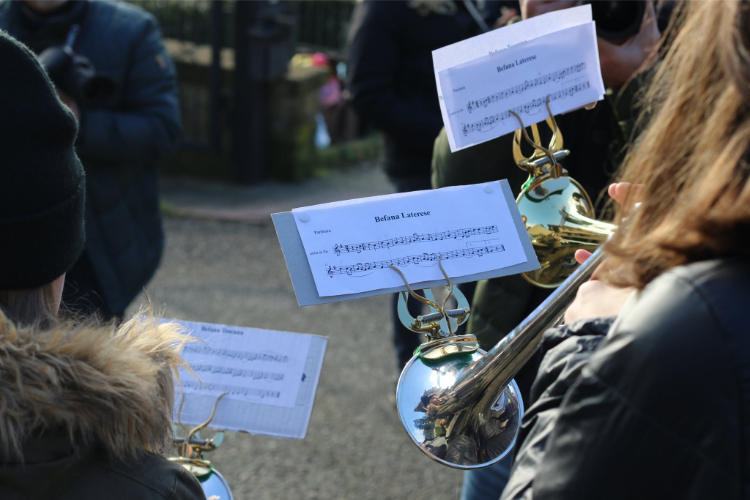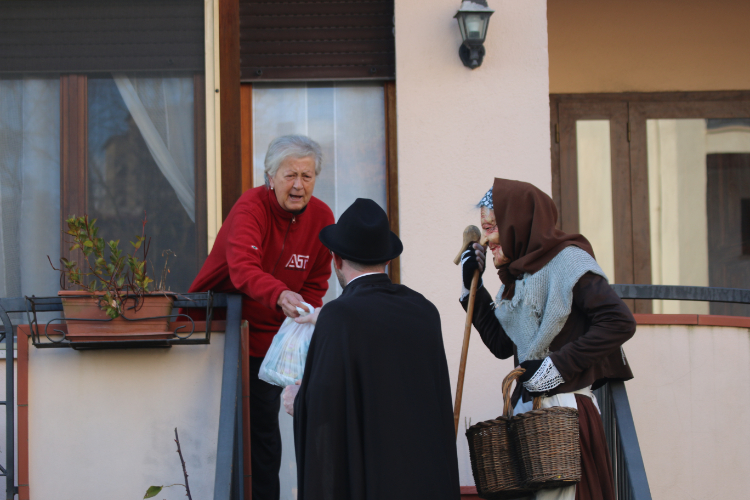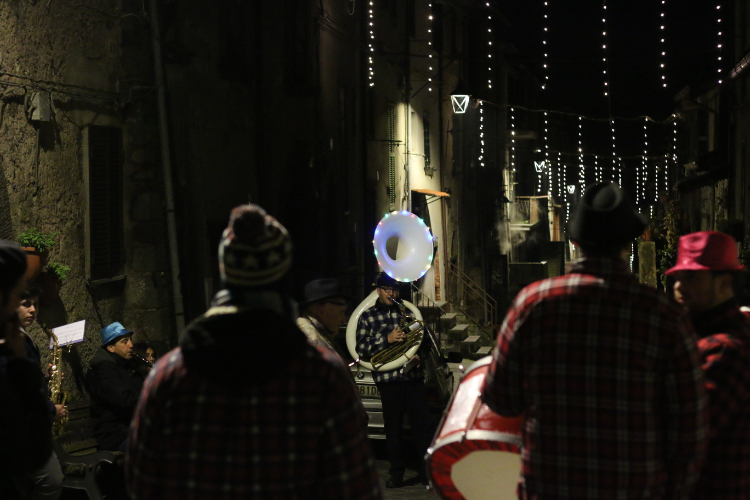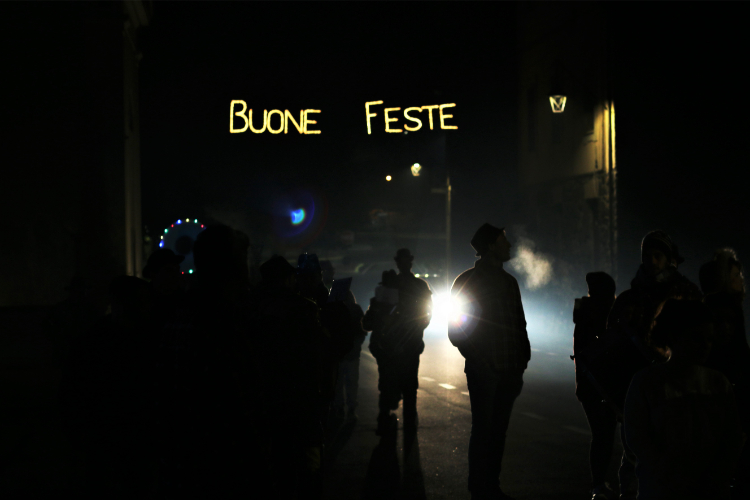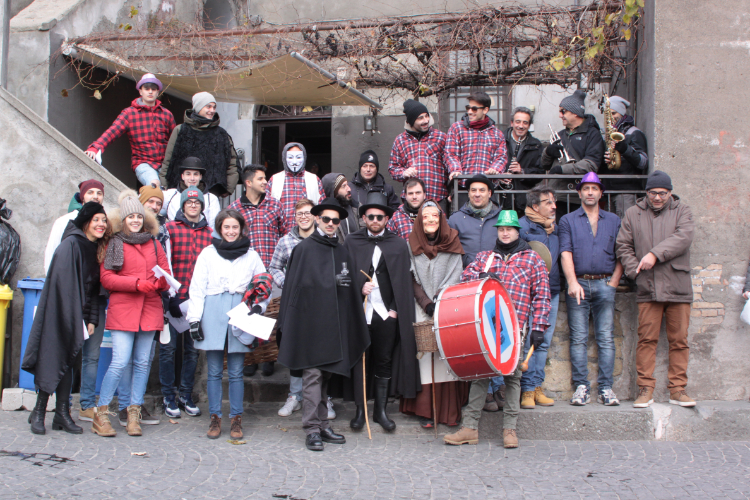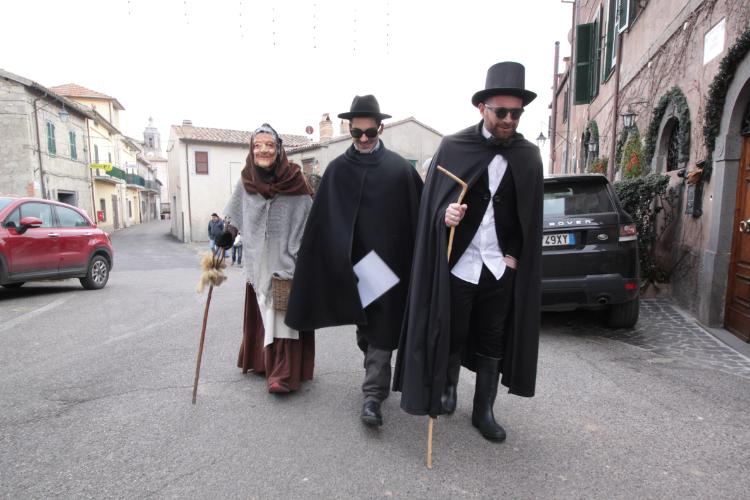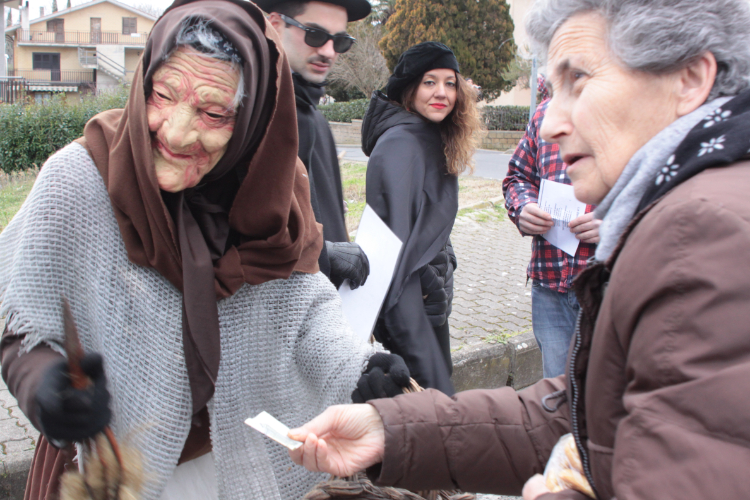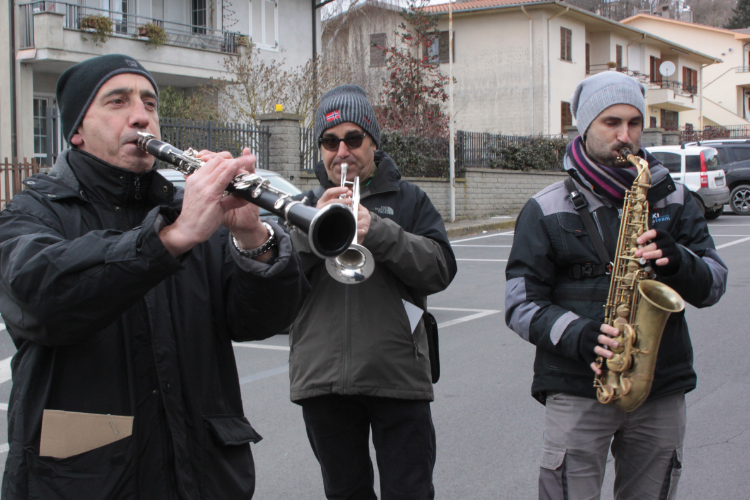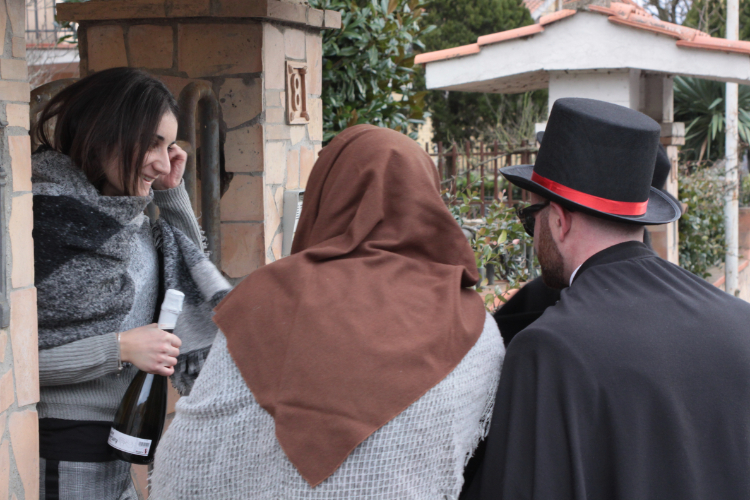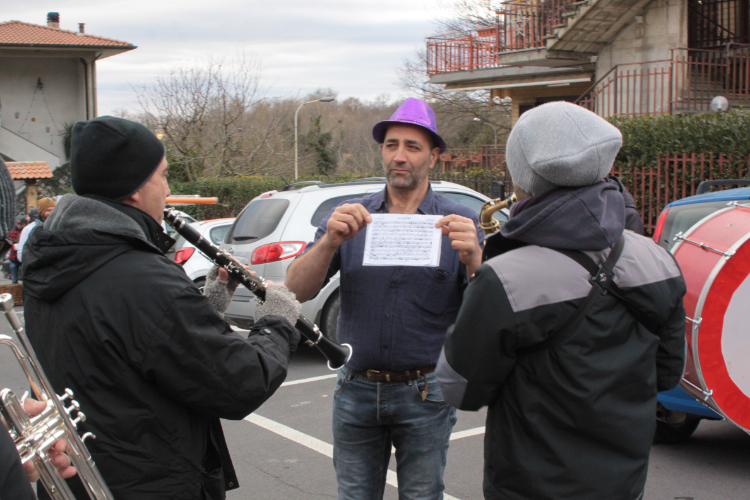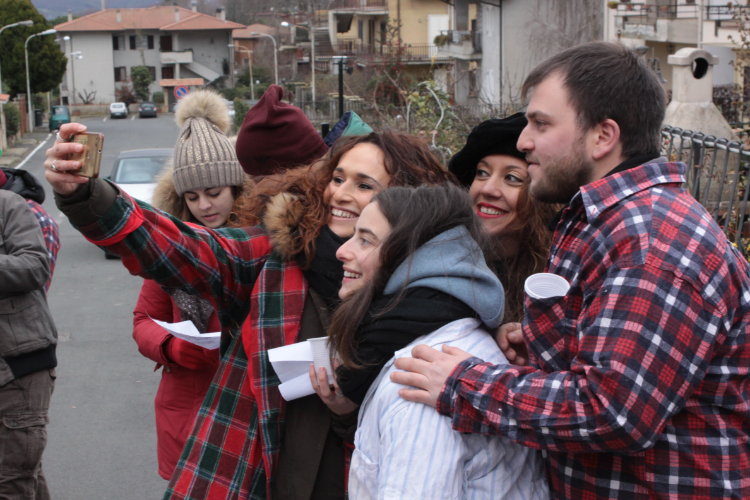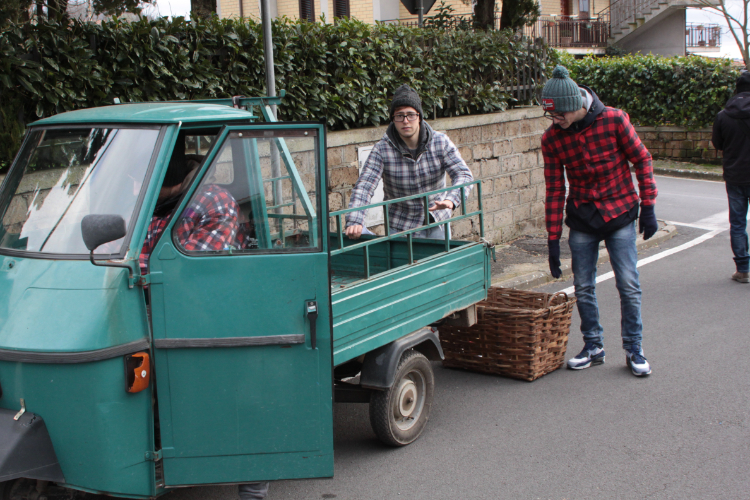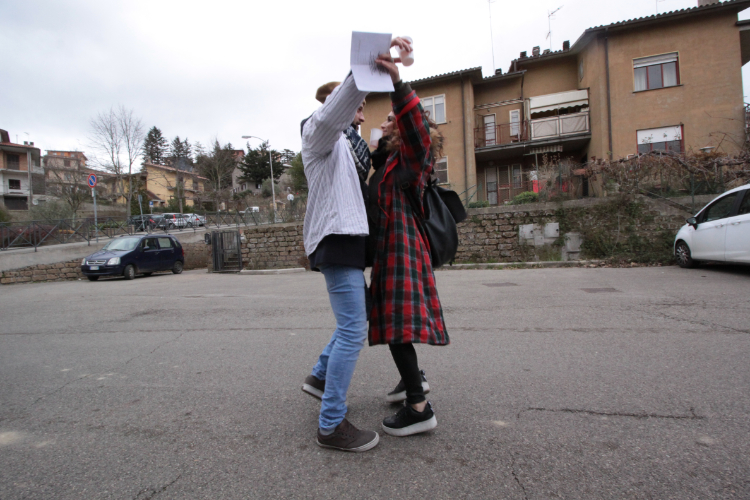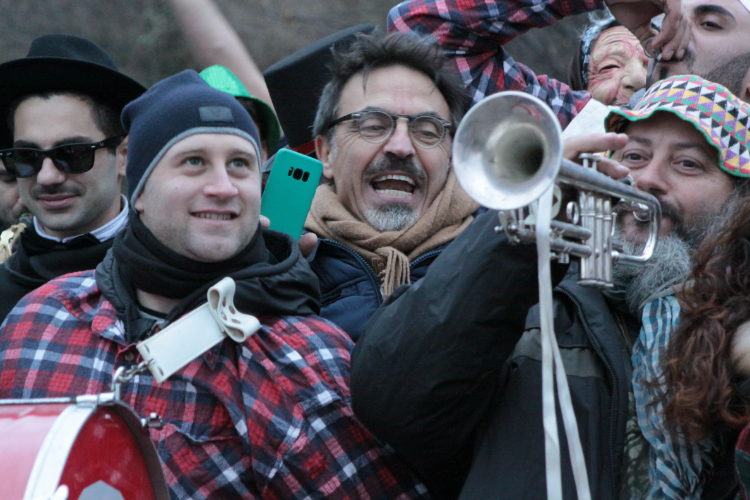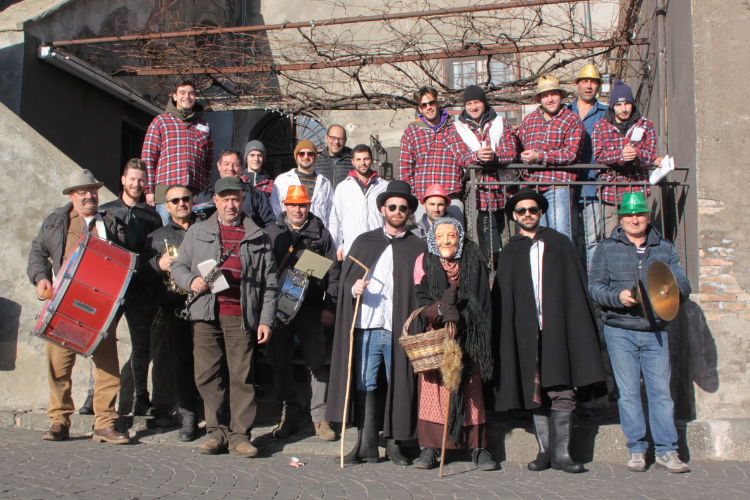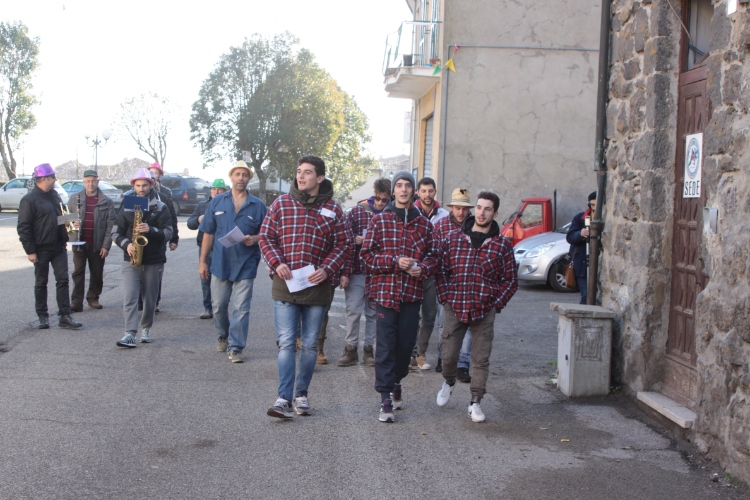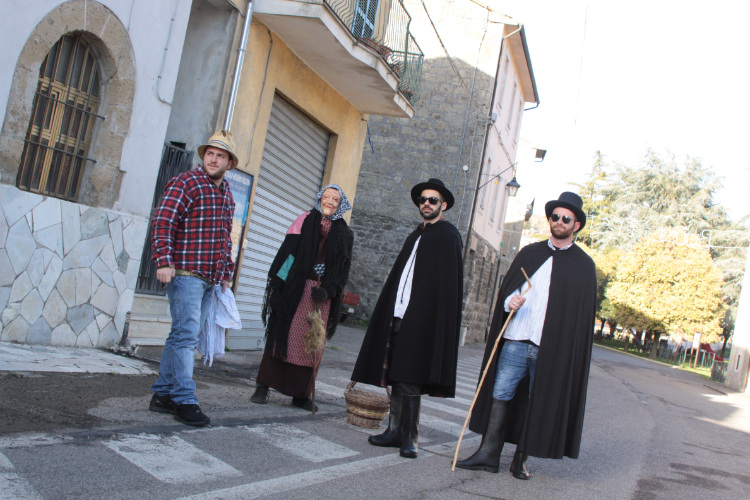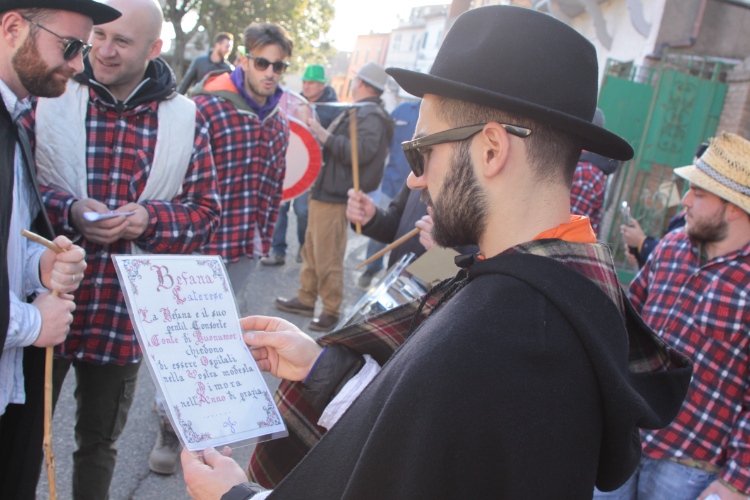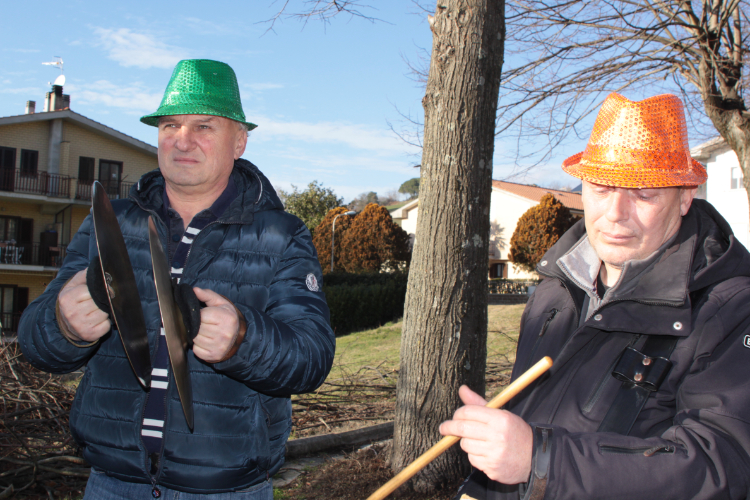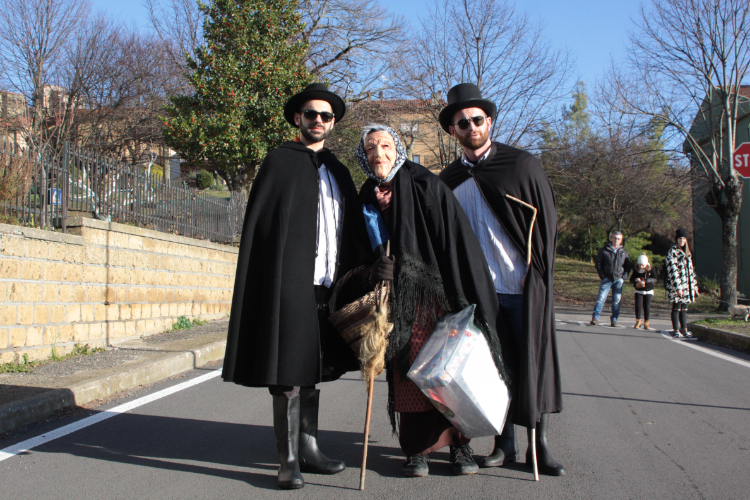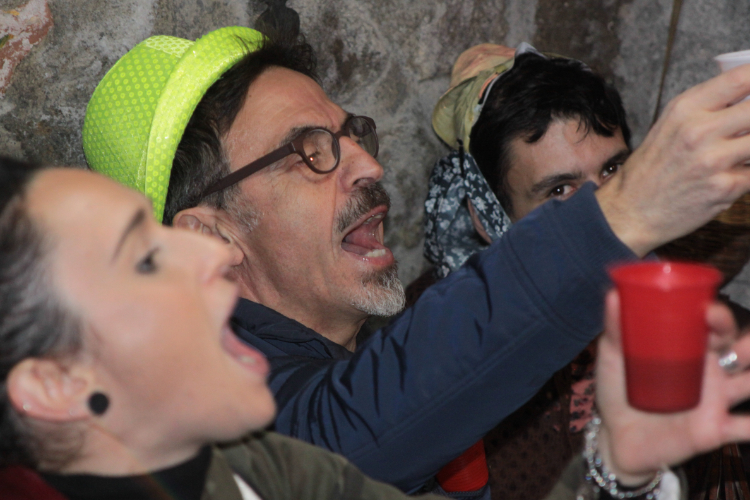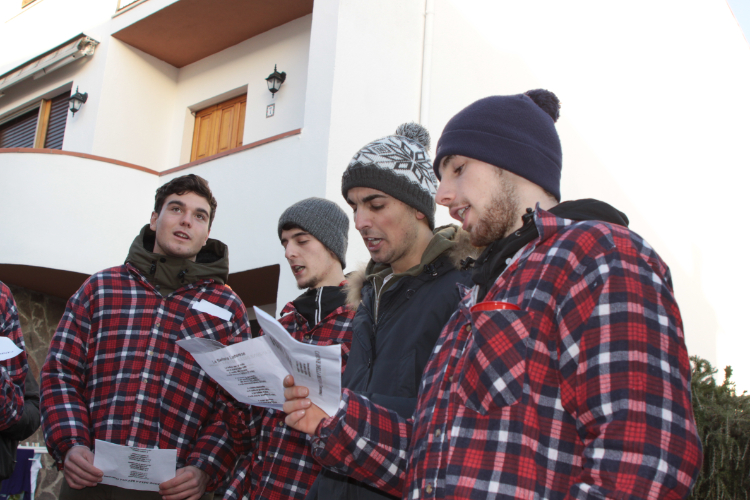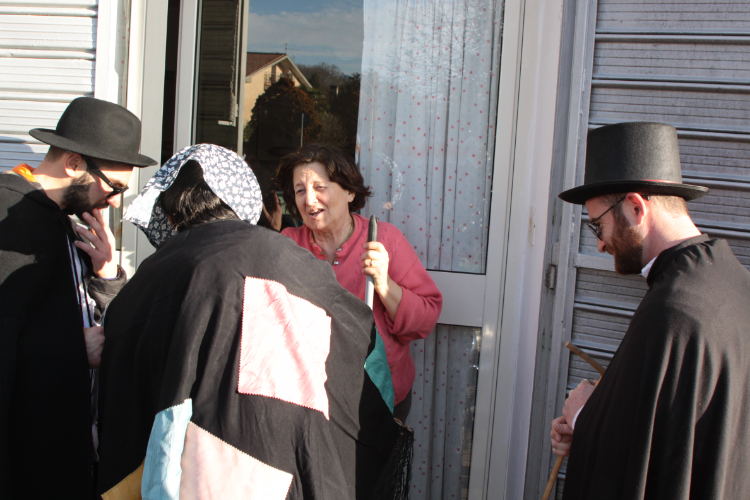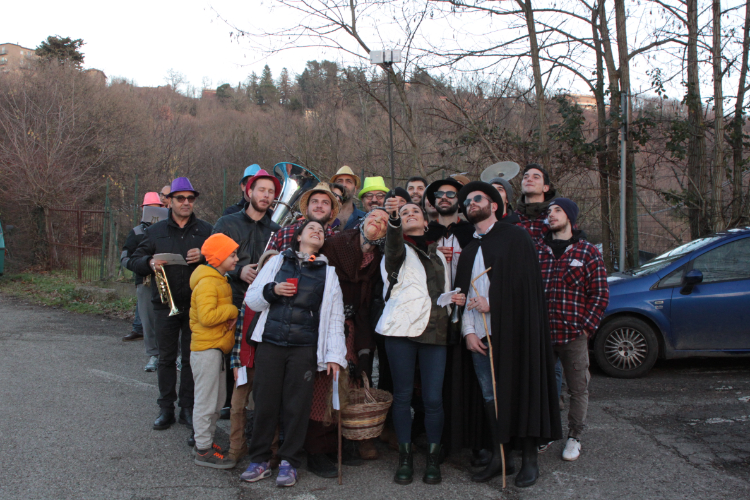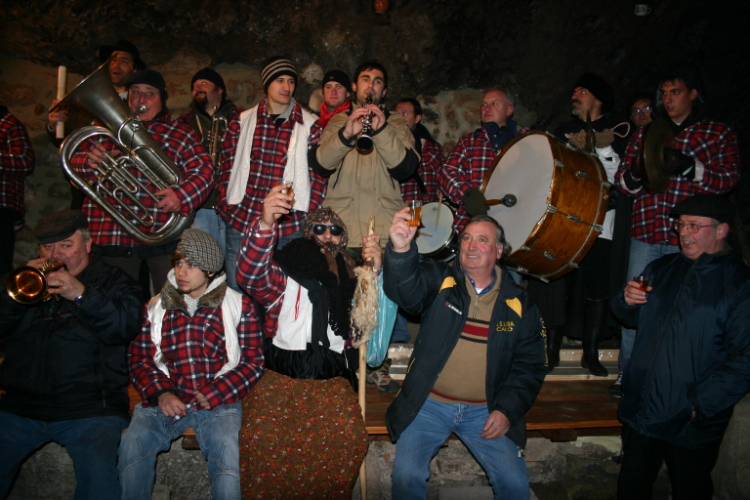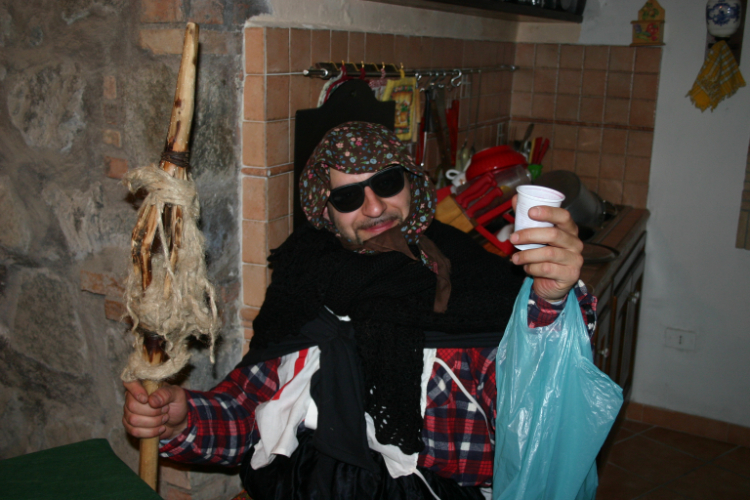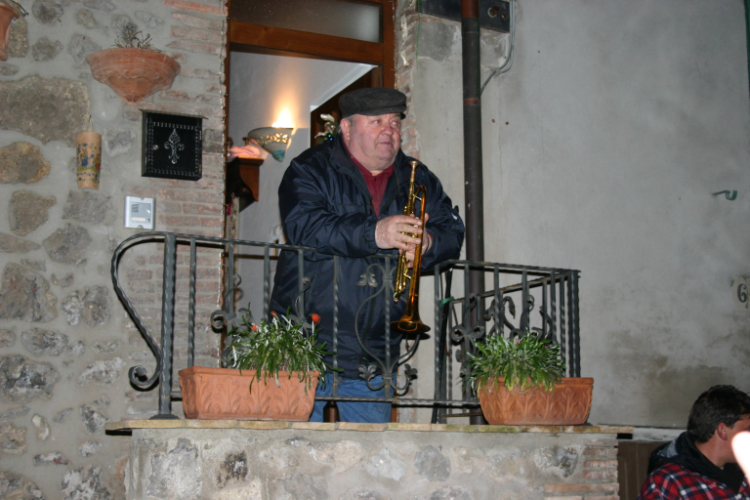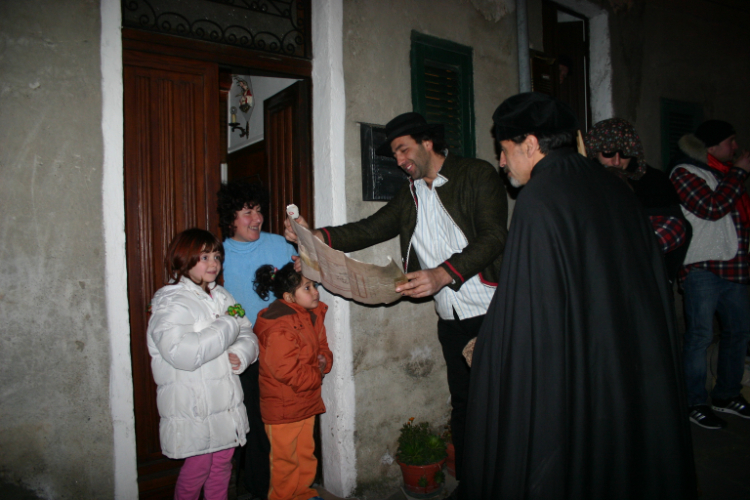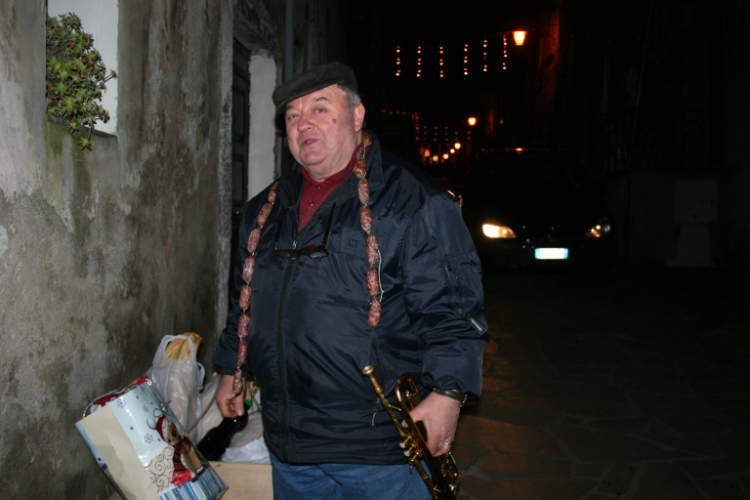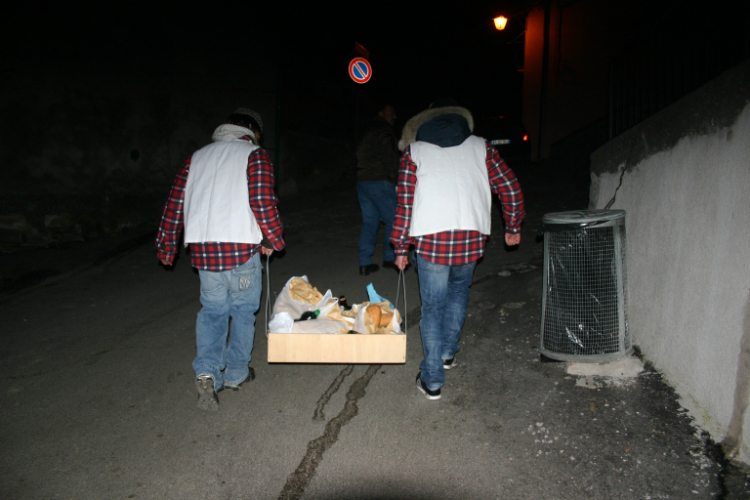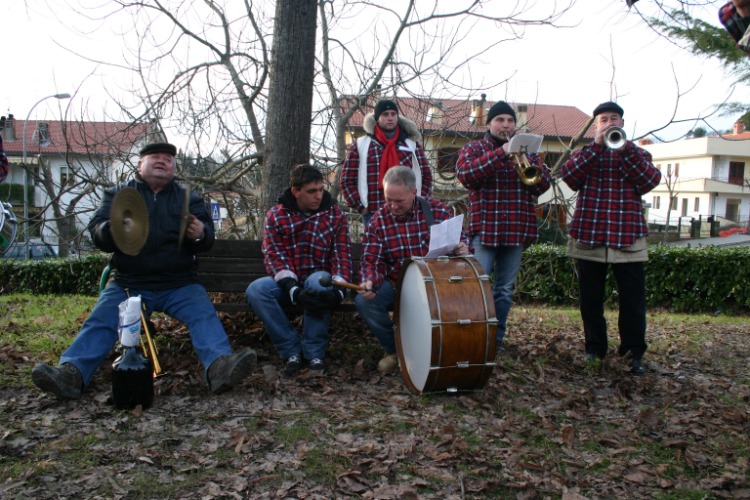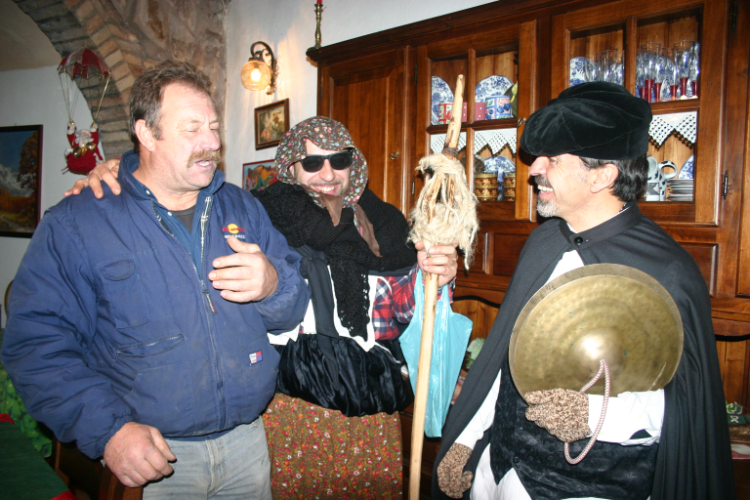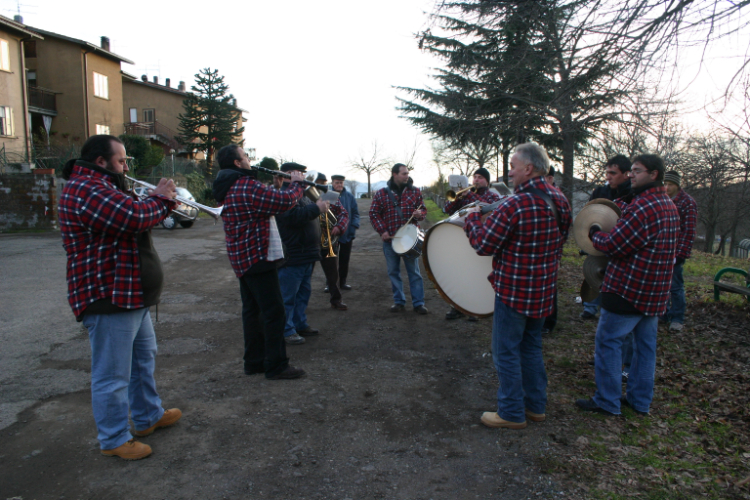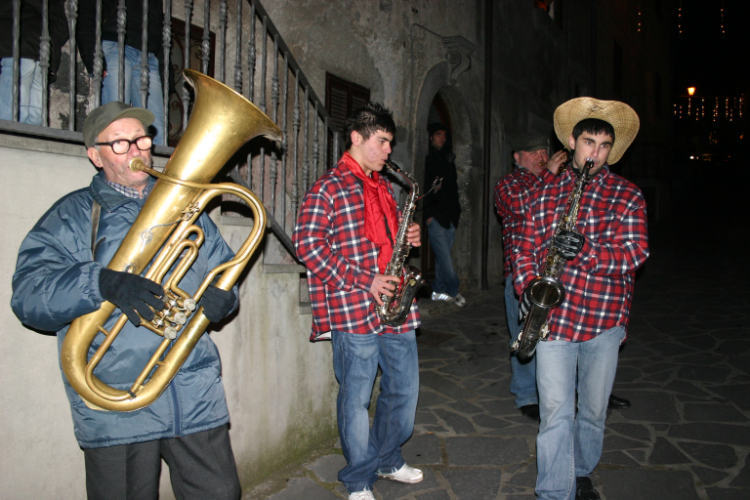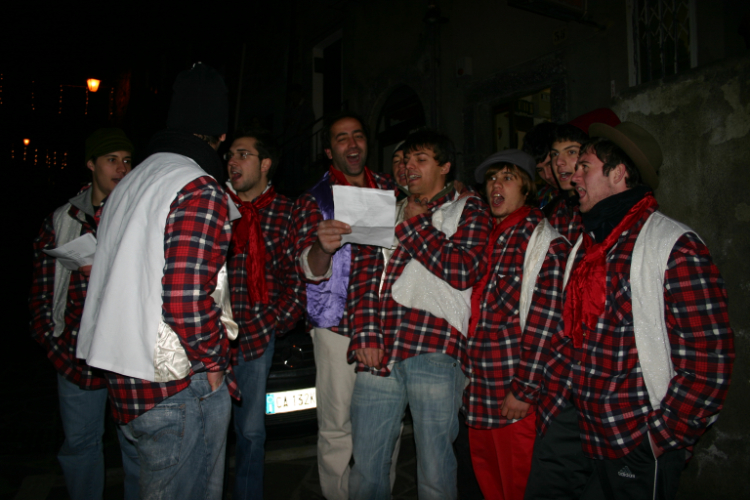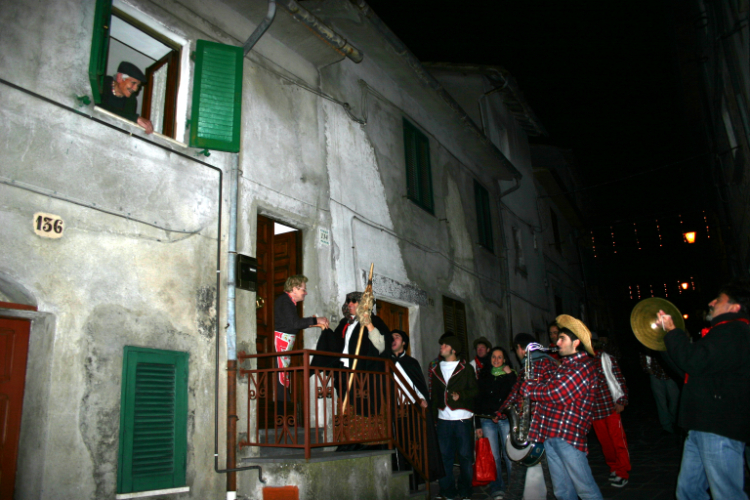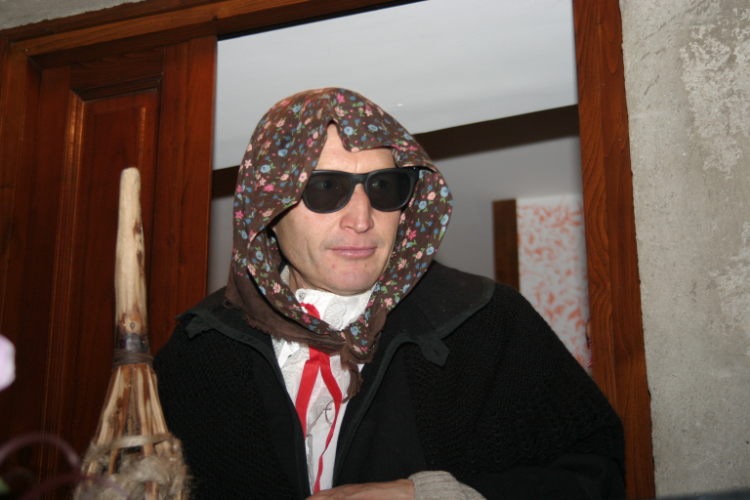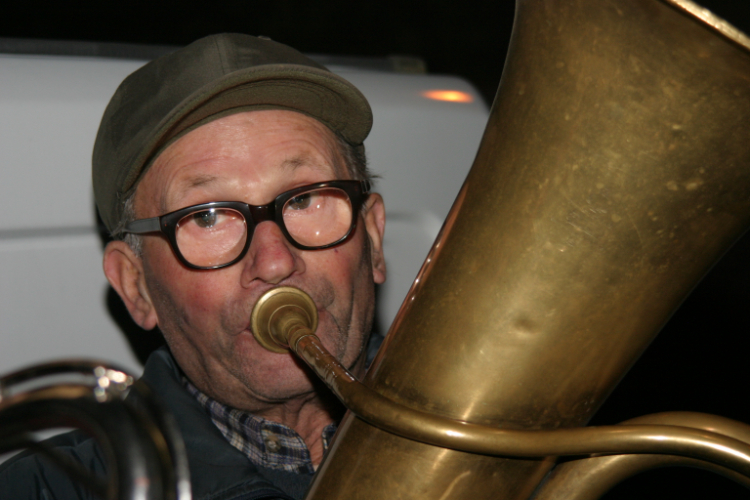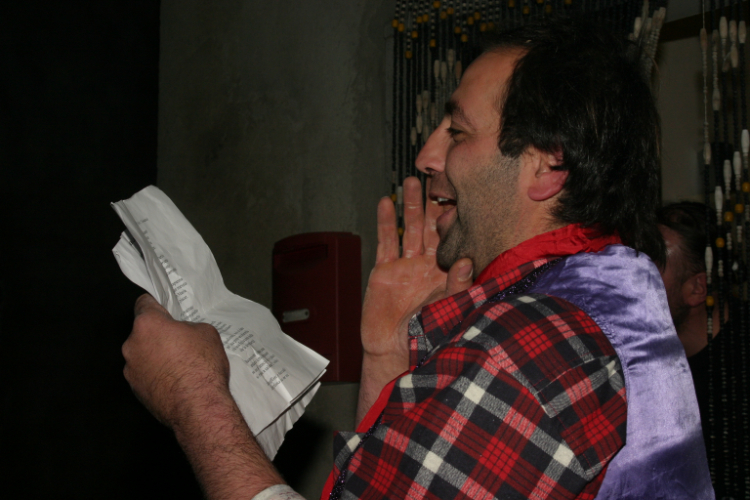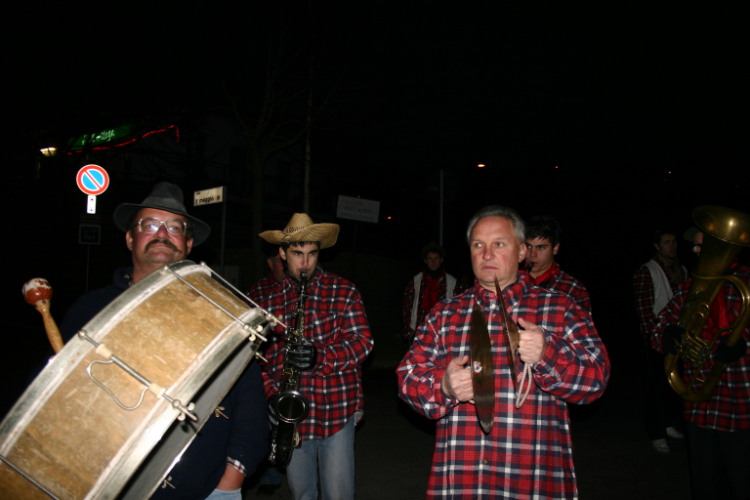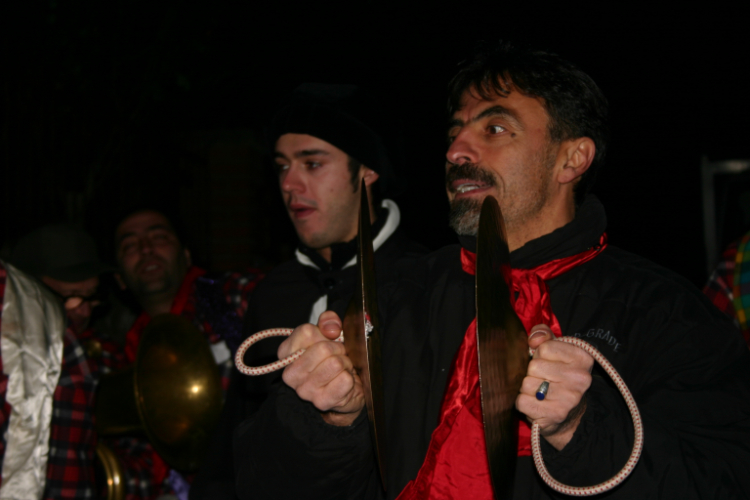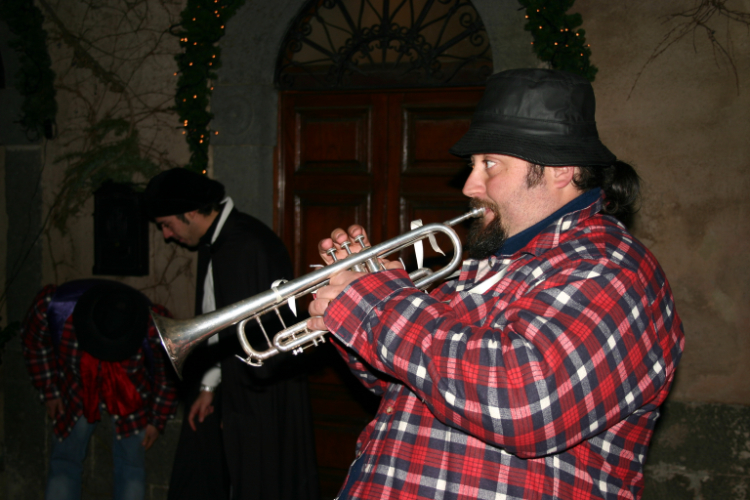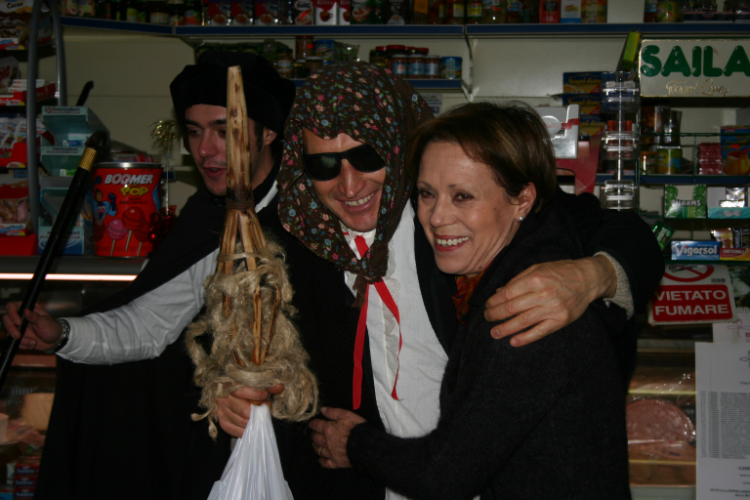The Befanata di Latera is a holiday celebrated on January 5th, where a group of people, all playing different roles, gather to go door to door spreading music and well wishes for the new year in exchange for gifts and donations.
The three main characters are the Befana, the count Buonumor and the butler. They’re backed up by the musicanti (musicians) often wearing funny and colorful headgear or wigs, the people in charge of collecting offerings and a wide range of men and women, young and old, who merrily trail after the befana while singing.
The group meets up in the early afternoon in one of the town’s squares and sets off after settling on an itinerary, which in the last few years has started from the Via della Cantoniera and passed through the so called “Case nuove” (new houses) to reach the Borgo (hamlet).
The Befana, according to customs, is played by a man wearing old lady clothes and holding a distaff or a stick. The face is covered by a shawl, often paired with big sunglasses and sometimes even a rubber mask. Whoever’s playing the Befana will usually disguise their voice as to not be recognized or encourage people to guess their identity. In contrast, the count Buonumor wears refined clothes, a black cape, top hat and a walking stick. Last but not least is the butler, in charge of announcing the arrival of the Befana by knocking on the door and repeating the phrase
La The Befana and her kind spouse count Buonumor
ask to be let into your esteemed abode in the year of our lord…
After being granted permission, the Befana entertains the hosts exchanging well wishes and, if there’s children around, giving out candy, while the musicians keep playing and singing outside the house.
As for the music, there are two songs for the occasion: the canto della Befana laterese (the Befana of Latera’s carol) and the canto della Befana toscana (the Tuscan Befana’s carol), although several traditional songs are also played, such as the Polketta del zì Cencio (uncle Cencio’s little polka dance), or other ballroom dances like Romagna mia (my romagna) and Tramonto (sunset). Before leaving the house, the Befana is offered a gift, usually in the form of food or money.
Each stop along the way varies in length, as people often prepare refreshments specifically for the occasion, which make the breaks last longer. In addition to visiting houses, the Befana also stops by local shops. At the end of the day the participants gather to cook dinner using all the food collected and share a meal together.
Just like any traditional holiday, the Befanata, always follows a loose script to which variations are introduced every year.
Video
2020 edition
2018 edition
2015 edition
Audio











